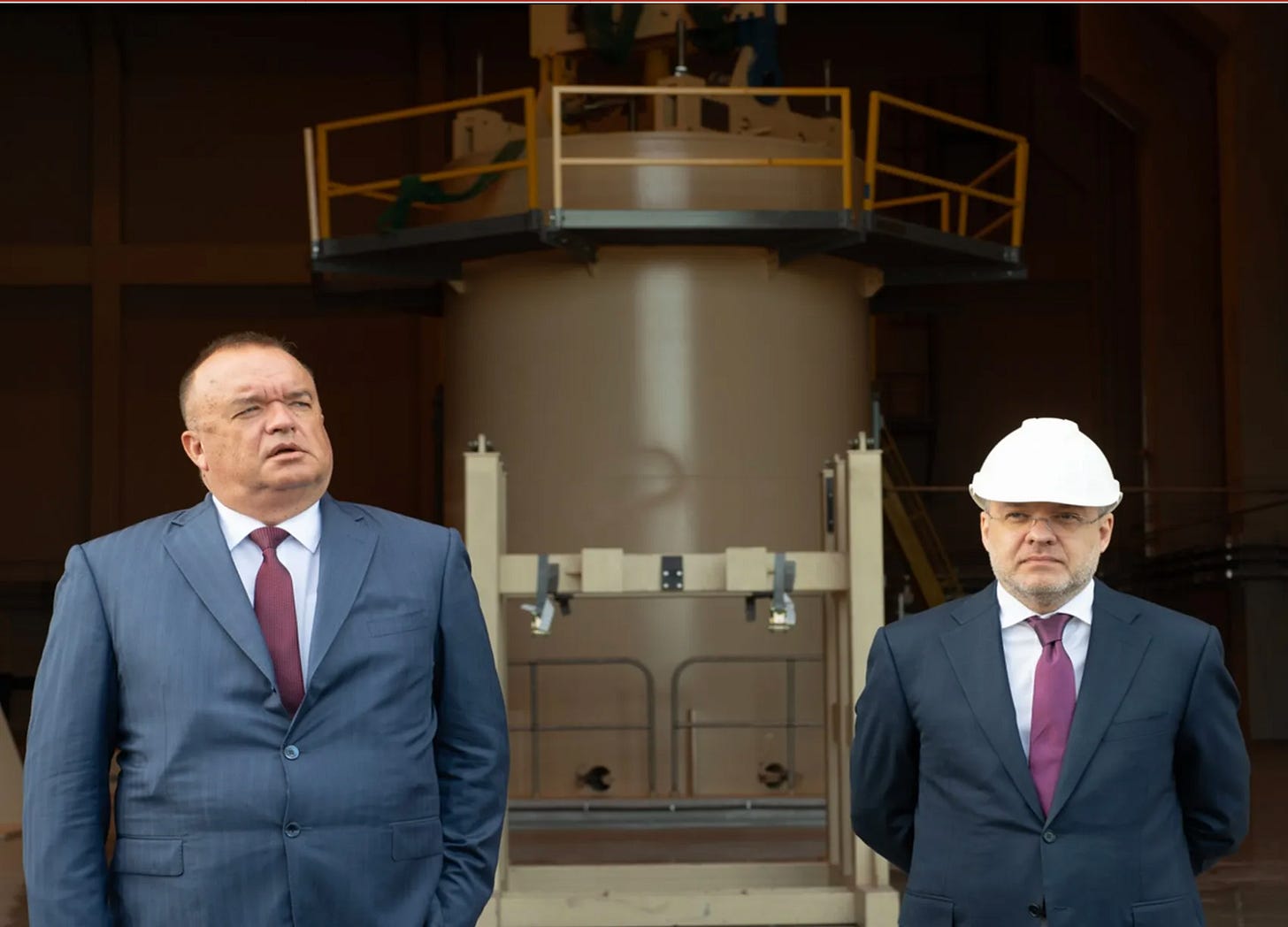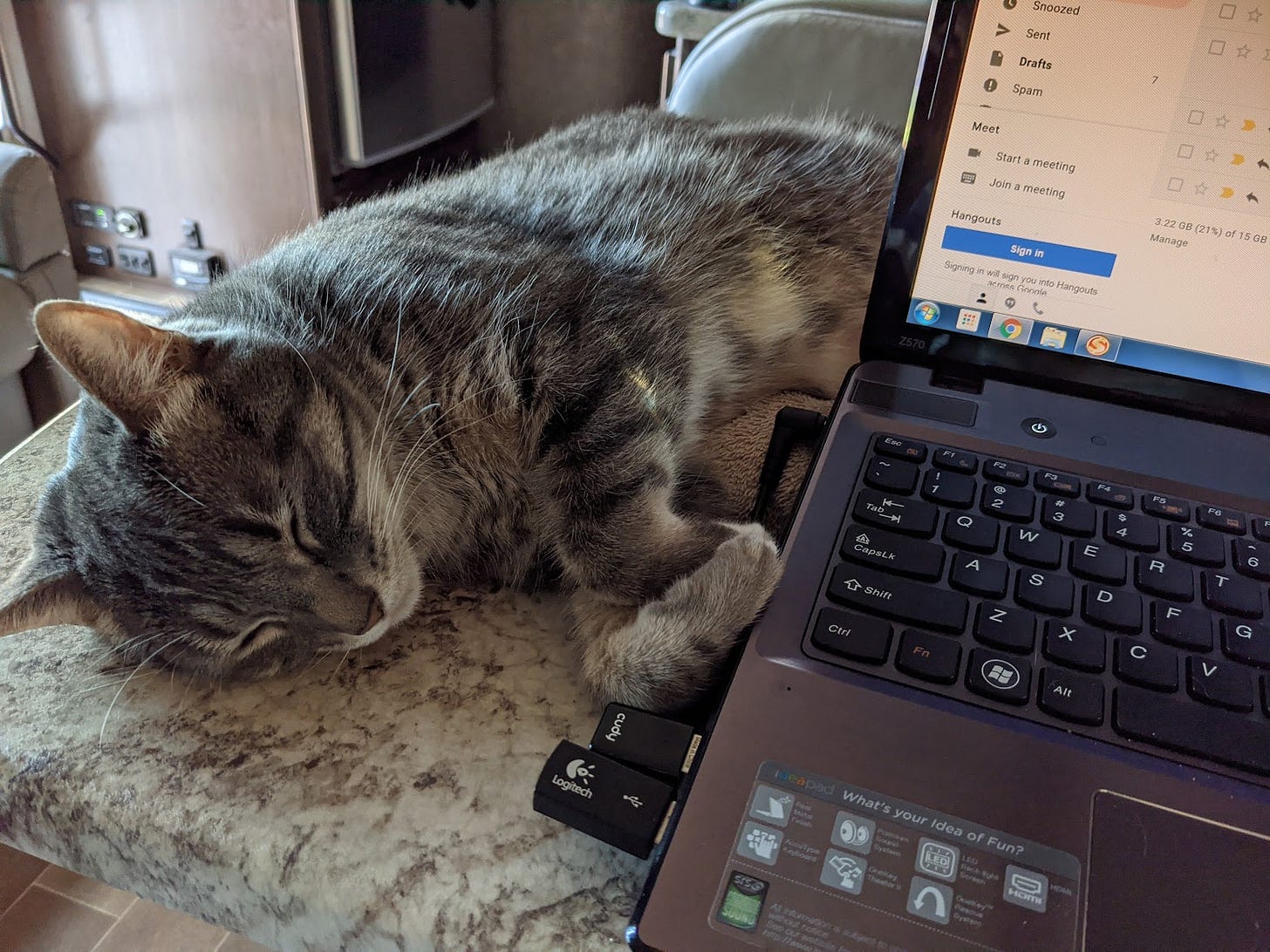The Two Most Dangerous Places in the World: Zaporizhzhia, Ukraine and San Onofre, California?
As nuclear power raises its rather ugly head from a long and expensive slumber, the climate crisis, politicians and tax-payer money step in to breathe new life into the bumbling Old Geezer.
As nuclear power raises its rather ugly head from a long and expensive slumber—put to sleep long ago by billion-dollar cost over-runs in Georgia, a tidal wave in Japan, a missile attack in the Ukraine, and a near miss in sunny Southern California—the climate crisis, politicians, and, of course, tax-payer money have now stepped in to breathe new life into the old geezer, with an often clueless media in tow.
Zaporizhzhia Nuclear Plant Hit on March 4, 2022
First, a fun fact. The storage of nuclear waste in the United States, as exemplified by the San Onofre Nuclear Generating Station located on the beach between Los Angeles and San Diego, can be more dangerous than in the Ukraine. Which is saying something. In both California and Zaporizhzhia the same company, Holtec International, fashions and sells the canisters which store the radioactive waste after it has been removed from the cooling pools. The spent nuclear fuel is in the form of uranium pellets inside long rods. This waste is the most poisonous stuff on the planet. In the Ukraine, Holtec builds and sells cans up to European standards. The European cans contain sensors and removable lids, and are short enough to be moved, if necessary, to check on the witches’ brew inside. Above all, the canisters destined for the Ukraine are some 4-inches thick and double-walled, in the fashion of the newer supertankers. If things go awry, technicians have a chance to address the issue. Presumably.
Energoatom Acting-President Mr. Petro Kotin (Left) and Minister of Energy of Ukraine Mr. German Galushchenko (Right) in Front of Holtec-Engineered Canister Transfer Device Located in Cask Receiving Building. (These are both good men, see Petro Kotin on You Tube.)
Dry Storage Canisters at the De-Commissioned San Onofre Nuclear Plant
At San Onofre this is not the case. The cans are too tall to be easily moved, sit 100 feet from the ocean and 18 inches above ground water. They are only 5/8 inch thick, not 4 inches, and they are single-walled. The stainless steel skins are subject to scratches in the loading process and potential corrosion from salt air and rising seas. In an intense moment in 2018, a crane operator nearly dropped a loaded 54-ton canister 18 feet. What would have happened if the can had fallen to the cement bottom? Waste does not explode like a bomb. Yet if a canister cracks open radioactivity wafts out and can be carried both short and long distances, east. Some 8 million people live within 50 miles. Yet there are no plans for a mass evacuation. When it was discovered that San Onofre’s reactor was so flawed that the plant had to be shut down, the former prime minister of Japan, Naoto Kan, testified in San Diego. He said that if the radioactive cooling pools at Fukushima had caught fire, he was prepared to evacuate not only Tokyo, with its population of 9 million people, but also the larger metropolitan area of 38 million, including regions 160 miles away from the plant. Martial law would have been declared.
The tide rushes in as dusk falls on the San Onofre Generating Station on March 25, 2014. (Allen J. Schaben / Los Angeles Times)
Had the fire proved uncontainable, Kan said, nobody would have been able to move back to the region for 100,000 years. His words echoed those of Mikhail Gorbachev, who once remarked that a second explosion at Chernobyl would have rendered Europe uninhabitable. (For the definitive book on what happened at Chernobyl, try Manual for Survival: A Chernobyl Guide to the Future by MIT Historian of Science, Technology and Society Kate Brown.)
MIT Historian of Science, Technology and Society Kate Brown
There are no long-term storage options for the nuclear waste from San Onofre or other nuclear plants in the US, old or proposed. That is a politician’s fantasy, and one so far quashed by Sen. Harry Reid of Nevada and President Barack Obama when the Yucca Mountain site was taken off the table, and later by various Texas NIMBY’s such as Gov. Greg Abbott. The newer so-called distributive nuclear generating plants would simply distribute more waste. France’s nuclear generating fleet is sometimes cited, but more than half are off-line due to corrosion and the irony that nuclear plants require major water sources for cooling, and France’s rivers, like ours, have been drawn down by drought and climate change.
Serious Liquidity Note: I am a Senior Fellow at the Samuel Lawrence Foundation, which works to promote a safe decommissioning process at San Onofre. We shall bandy more of these issues about in further columns!
It’s hard to give the HOT GLOBE™ comical spin to all this but let’s take a deep breath and try:
Slim Pickens Riding the Big One in DR. STRANGELOVE: Or How I Learned to Quit Worrying & Love Nuclear Power
Back to sober analysis if such a thing is ever possible. I am more worried about nuclear as an unintended consequence of over-reacting to climate change than I am by climate change itself and yes, I am at most times an aficionado of James “Gaia” Lovelock, who surmised the role of chlorofluorocarbons (CFCs) in stratospheric ozone depletion (the ozone hole) with an instrument he built on his kitchen table, thus saving humanity from itself, and who said before he checked out of The Hotel earlier this year at age 103, “Even if they were right about its [nuclear power’s] dangers, and they are not, its worldwide use as our main source of energy would pose an insignificant threat compared with the dangers of intolerable and lethal heat waves and sea levels rising to drown every coastal city of the world. We have no time to experiment with visionary energy sources; civilization is in imminent danger and has to use nuclear – the one safe, available, energy source – now or suffer the pain soon to be inflicted by our outraged planet.”
I hate it when people way smarter than I am so strongly disagree. Maybe if he had not died so young, lived a few more years, he would have come to his senses? However, he did state the above in 2004 and walk it back in 2012, saying he had been “alarmist.”
“One thing that being a scientist has taught me is that you can never be certain about anything. You never know the truth. You can only approach it and hope to get a bit nearer to it each time. You iterate towards the truth. You don't know it.”
I am not as old as Sir James, but still, I am of the “Duck and Cover” generation, and when in the 5th Grade the teacher closes the blinds to guard against flying glass, asks the class to put the tables together and crawl beneath them, fold their hands over their heads and crouch down, and the little girl next to you cannot stop sobbing, it leaves a memory that’s hard for the green-washers at the privately owned “public” utilities to erase. They own nuclear in our country.
The relation of nuclear power to nuclear warfare is strong, not just psychological. Arguably, nuclear power was promoted in the 1950’s as a sort of cover for the nastiness of nuclear war, “Atoms for Peace” or clean energy forever. Research by Cornell Professor Matthew Fuhrmann links civilian nuclear cooperation to nuclear weapons programs, as the technology, know-how and materials used and generated by civilian nuclear use reduced the costs of pursuing a nuclear weapons program.
Nuclear power appeals to some Democrats like Secretary of Energy Jennifer Granholm. To the affable former Governor of the great state of Michigan, nuclear power plants are like hot water heaters. They provide plenty of good union jobs and, of course, votes, and so we, as compliant taxpayers are now allocating subsidies and tax breaks to the long dormant nuclear industry. For Republicans, it would seem, nuclear power is yet another puerile chance to “own the libs,” at such a wasteful cost to taxpayers that it belies any fiscally conservative beliefs they ever pretended to stand for. As Michael Mann, he of the infamous hockey stick graph, writes in his excellent The New Climate War, Conservative Liberals “divert resources and attention away from the more obvious solution—renewable energy,” which, he adds may be the point.
Well, we have ruminated long enough upon the follies of possible apocalypse. “Now I am become death, Destroyer of worlds,” as Robert Oppenheimer, father of the atomic bomb, cheerfully phrased it before the FBI canceled him for his political and sexual peccadillos. #
Time for this week’s “Office Cat,” which, a thank you to Elaine M. of Tucson, Arizona, is not a llama but a real cat, name of “Tink.”
“Tink” Taking a Breather from Editing Her Substack Column, “Tabbies I Have Known, Chihuahuas I Have Scratched”








